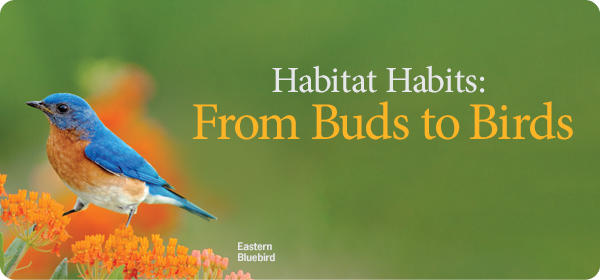
Create a bird-friendly habitat and make a difference for birds.
Think of your yard as a blank slate.
If you could start from scratch, what would be your ultimate landscape design? A classical French garden? An English cottage garden? Or the tried and true suburban turf grass and shrubbery design?
All of these designs can bring style and beauty to your yard, but if your desire is to have a lot of birds and other wildlife as a part of your landscape…they are sure to fail.
So, why not consider a different garden design…a habitat garden! Habitat gardens display all of the beauty and style as the other designs, but they also attract and nurture a much broader variety of wildlife such as bees, butterflies, birds, and amphibians.
By creating a native landscape that provides wildlife with food, water, shelter and the places they need to raise their young, you will also play a valuable role in helping to reverse some disturbing trends in wildlife populations.
Research has recently quantified the loss of almost one-third of our total bird population in North America over the last 50 years, and our Monarch Butterfly population has declined by more than 80 percent since the mid-1990s. Scientists have identified habitat loss as the biggest reason for these and other wildlife declines.
Just imagine if we could re-make every suburban lawn in North America into a nurturing wildlife habitat! While once a daunting thought, it is easier and more realistic to do than ever before…thanks to the National Wildlife Federation’s Certified Wildlife Habitat program. Through the use of NWF’S abundant support materials and online resources, everyone can be inspired to create a haven for wildlife in their own yard.
Since its inception, NWF has certified more than 250,000 wildlife habitats and Wild Birds Unlimited, as the Champion for the Certified Wildlife Habitat program, encourages everyone to consider becoming the next to certify. Visit wbu.com/certify-your-yard to see how easy it is to create your own backyard habitat and to truly make a difference for the future of song birds and other wildlife.

